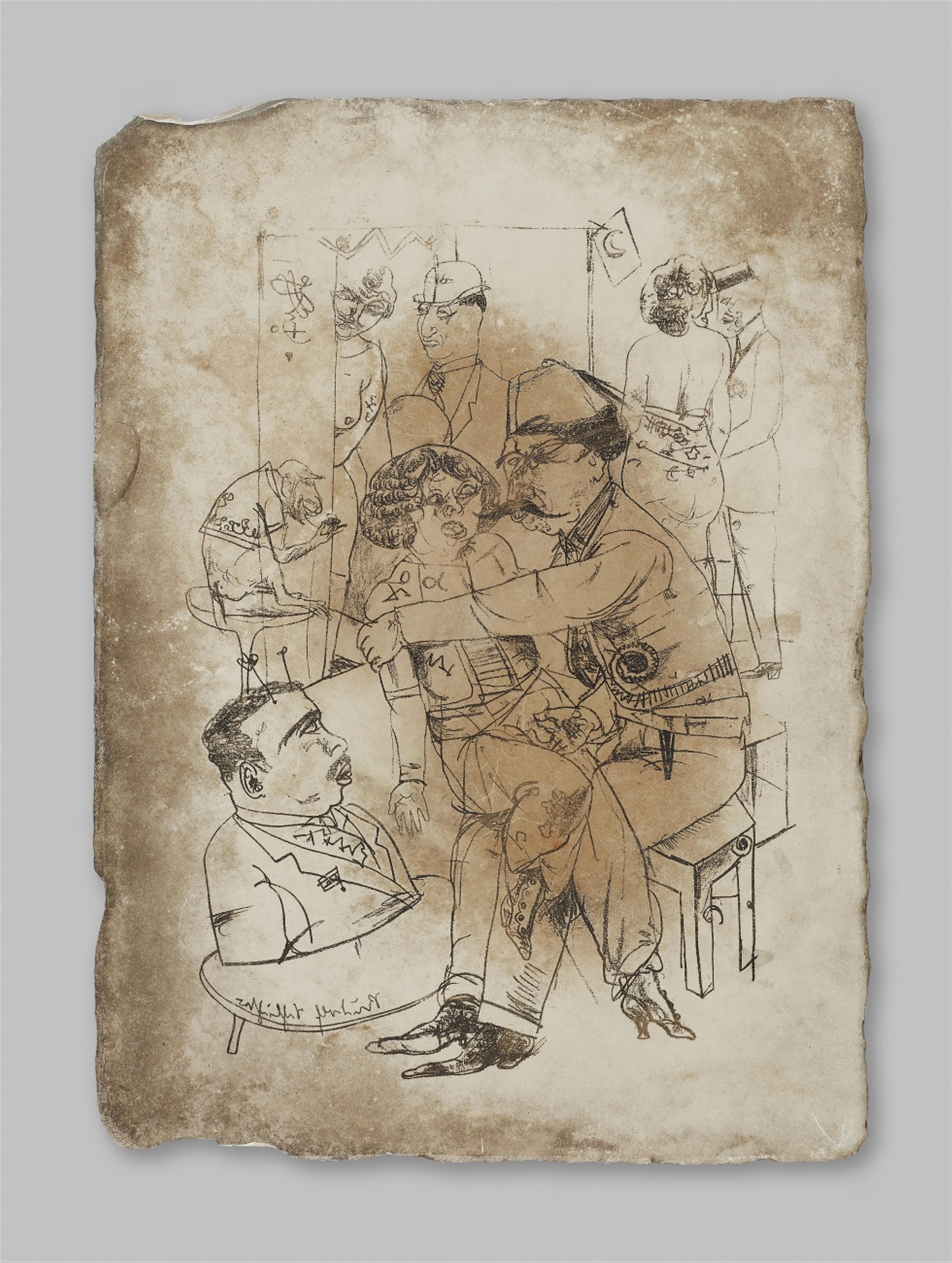Rudolf Schlichter
Schaubude
Mid 1920s
Lithographic stone 42.5/43.5 x 31.5 x 2 cm Signed 'Rudolf Schlichter' inverted lower left. - Isolated loss of material in the margins. A barely perceptible grease stain at the centre.
According to Rudolf Schlichter's own account, he was already drawing visionary apocalyptic scenes, “images from Biblical history […], depictions of battles and bloody atrocities” as a child (cited in exhib. cat. Rudolf Schlichter: Gemälde, Aquarelle, Zeichnungen, Tübingen/Wuppertal/Munich 1993, p. 9). Later, following his studies at the academy in Karlsruhe, the dubious nightlife of Berlin in the 'Roaring Twenties' offered him (along with a number of fellow artists) room for expressing his sadomasochistic fantasies. In Berlin from 1919, he worked for Heartfield and Herzfelde as an illustrator and became a member of the Communist Party. Five years later he founded a Communist artists association, the “Rote Gruppe” (Red group), together with George Grosz. He was additionally bound to Grosz by a close friendship, and for a time the two of them lived together in a garden building in Berlin. This may have been the property where the lithographic stone was found in 2016: it had been turned upside down and used as a paving stone. The drawing was preserved unscathed. However, it is uncertain whether lithographic prints were ever actually made from the stone; none seem to have been preserved. The scene presented in the “Schaubude” is to be identified somewhere between a bordello, cabaret, costume party and film. The scattered crescent moons and the couple in foreground's Arabic-Turkish clothing recall the Ottoman Empire, although the button-up boots - which do not fit with the harem pants and had already gone out of fashion by that point anyway - introduce Schlichter's obsession with this footwear into the image. The bisected male torso, “made a monkey” through his horns, is damned to become the idle observer of sexual transgressions. The watercolours “Filmtürken” and “Armeniergreuel” from 1920/1921 demonstrate Schlichter's interest in the oriental scenery promoted through corresponding cinematic themes in Berlin, the home of the UFA film studios (see exhib. cat. 1993, op. cit., pp. 108, 109).
Provenance
Private Collection, Berlin
Literature
Mitteldeutsche Zeitung dated 23 Jun. 2016; Kunstmarkt.com 30 Aug. 2016
Exhibitions
Halle/Saale 2016 (Kunstverein "Talstrasse"), Eros und Apokalypse, aside from catalogue

